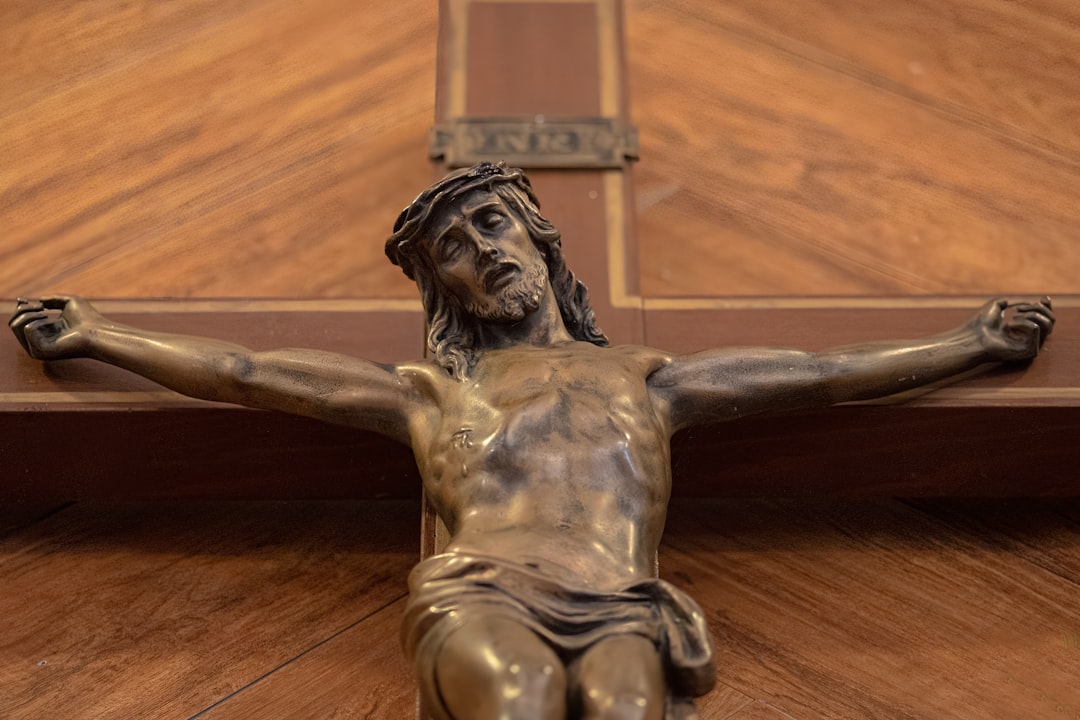Cut Off Your Hand If It Causes You to Sin

When Jesus shocked his listeners with those jarring words about cutting off hands and plucking out eyes, most of the crowd probably felt their stomachs turn. Jesus taught, “If your right eye causes you to sin, gouge it out,” in the Sermon on the Mount (Matthew 5:29-30). This wasn’t a call for self-mutilation but rather powerful hyperbole designed to grab attention. He used shocking language to emphasize the severe nature of sin and the radical measures we should take to avoid it. Jesus uses this disturbing image of plucking out our own eyes to reveal how awful and self-destructive sin is, explaining how we should avoid sin like we would avoid mangling our own body since sin mangles our eternal soul.
It’s Easier for a Camel to Go Through the Eye of a Needle

Picture the scene: a wealthy young man walks away from Jesus, unwilling to give up his possessions for eternal life. The statement that it’s easier for a camel to go through the eye of a needle than for a rich man to enter the kingdom of God is both figurative and hyperbole. This statement wasn’t meant to be taken literally – it was impossible by design. Jesus employed hyperbole for emphasis, as seen in phrases like “Indeed, it is easier for a camel to go through the eye of a needle than for someone who is rich to enter the kingdom of God”. The impossibility was exactly the point Jesus wanted to make about the spiritual danger of putting wealth before God.
I Am the Bread of Life

Some listeners were genuinely confused when Jesus declared himself to be bread. This confused some people, as “The Jews then disputed among themselves, saying, ‘How can this man give us his flesh to eat?'” But Jesus did not actually mean He was a loaf of bread. In this metaphor, Jesus compares himself to bread, and the bread of life is a symbolic idea that Jesus offers eternal fulfillment. Instead, He meant that He gives life and sustains us spiritually, the way bread sustains the body. The metaphor worked because everyone understood how essential bread was for physical survival.
I Am the Door of the Sheep

Imagine the bewildered faces when Jesus called himself a door. Jesus says, “I am the door of the sheep” (John 10:7), but Jesus does not mean that He has a doorknob on His body but that He is the only means of entry into God’s kingdom, just as a door is the means of entry into a room. This metaphor has several layers, where we, humanity, are represented by the sheep – helpless, rather foolish creatures at the mercy of a shepherd to protect them, with Jesus as the door to the sheepfold, the safe haven of the sheep, as the only way to enter into the place of protection and rest. The image would have been crystal clear to his agricultural audience who knew exactly how sheepfolds worked.
You Must Eat My Flesh and Drink My Blood

On one level, Jesus’ regular use of hyperbole might give a clue to this phrase as a metaphor, while eating human flesh and drinking human blood was against clear biblical prohibitions against consuming blood, sounding like cannibalism and human sacrifice. In context, Jesus didn’t explain how he didn’t mean it literally when most of the crowd left him that day, as it was a challenge to accept him completely and wholeheartedly. The shocking nature of these words was intentional – they forced people to grapple with the depth of commitment required to follow him. They stuck with him and got the explanation later during the first communion.
You Are the Salt of the Earth

When Jesus told his followers they were salt, nobody started looking for shakers. Here is another famous metaphor for the followers of Christ: “You are the salt of the earth. But if the salt loses its saltiness, how can it be made salty again? It is no longer good for anything,” where they are compared to salt, in that they have a purpose in the world. In biblical times, salt was very important as a preservative, flavoring, and even as currency. The metaphor perfectly captured the idea that Christians should preserve society from moral decay and add flavor to the world around them. Losing your “saltiness” meant becoming spiritually ineffective.
I Am the Light of the World

Nobody expected Jesus to start glowing when he made this bold declaration. Jesus said “I am the light of the world” (John 8:12), but Jesus did not mean He literally gave light to the world, like the sun, but instead pointed to His role of driving back spiritual darkness and illuminating the way of life and truth. Here is another metaphor that Jesus used to talk about himself, calling himself “the light of the world,” where in The Bible, light refers to salvation, and darkness refers to sinfulness. The contrast between light and darkness was universally understood – light brought safety, clarity, and hope, while darkness brought fear and confusion.
Don’t Let Your Left Hand Know What Your Right Hand Is Doing

This peculiar phrase about secretive body parts wasn’t anatomical advice. Jesus employed hyperbole as seen in phrases like “do not let your left hand know what your right hand is doing”. The saying appears in the context of giving to the poor and performing acts of charity without seeking recognition or praise. Jesus was emphasizing that genuine generosity should be so natural and unself-conscious that it feels automatic. However, it was never understood literally. The hyperbolic language painted a picture of humility so profound that even your own body parts couldn’t coordinate to show off.
You Strain Out a Gnat but Swallow a Camel

The religious leaders probably weren’t literally eating camels, despite what Jesus suggested. Jesus employed hyperbole for emphasis, as seen in phrases like: “You blind guides! You strain out a gnat but swallow a camel!” (Mt. 23:24). This vivid metaphor targeted the Pharisees’ tendency to obsess over minor ritual details while missing major moral principles. The absurd image of someone carefully filtering out a tiny gnat from their drink while somehow managing to gulp down an entire camel highlighted their backwards priorities. Jesus was essentially calling out their spiritual blindness through deliberately ridiculous imagery that everyone would remember.
You Are Like Whitewashed Tombs

When Jesus compared the religious leaders to decorated graves, he wasn’t suggesting they needed better skincare routines. This metaphor struck at the heart of religious hypocrisy – looking spiritually beautiful on the outside while being spiritually dead on the inside. Whitewashed tombs were a common sight during Jesus’ time, painted white to make them visible and attractive, yet filled with decay and death. The comparison was particularly cutting because it suggested that the religious leaders, despite their polished appearances and righteous facades, were actually leading people toward spiritual death rather than life. The metaphor worked because everyone could visualize the stark contrast between the tomb’s appealing exterior and its grim contents.
Forgive Seventy Times Seven

Jesus said “Not seven times, I tell you, but seventy-seven times!” (Mt. 18:22) when Peter asked about forgiveness limits. This wasn’t meant to be a literal mathematical formula where you stop forgiving after 490 offenses. The number represented completeness and infinity in Jewish thinking – Jesus was essentially saying there should be no limit to forgiveness. The hyperbolic math was intentionally overwhelming, designed to shatter conventional thinking about keeping score of wrongs. Peter thought he was being generous by suggesting seven times, but Jesus exploded that limitation entirely. The real message was about developing a heart so transformed by grace that forgiveness becomes the default response.
Understanding these metaphorical teachings transforms how we read Scripture and live our faith. Rather than getting caught up in literal interpretations that miss the point entirely, we can appreciate the literary artistry Jesus used to communicate profound truths. These weren’t just ancient sayings – they were carefully crafted word pictures designed to stick in our minds and challenge our assumptions about spiritual life.
What strikes me most about these examples is how Jesus knew exactly what would grab attention and create lasting impressions. He wasn’t trying to confuse people but to wake them up from spiritual complacency. The next time you read something in Scripture that seems impossible or bizarre, maybe that’s exactly the reaction Jesus was going for. What would you do if someone started talking about eating flesh or cutting off body parts today?





